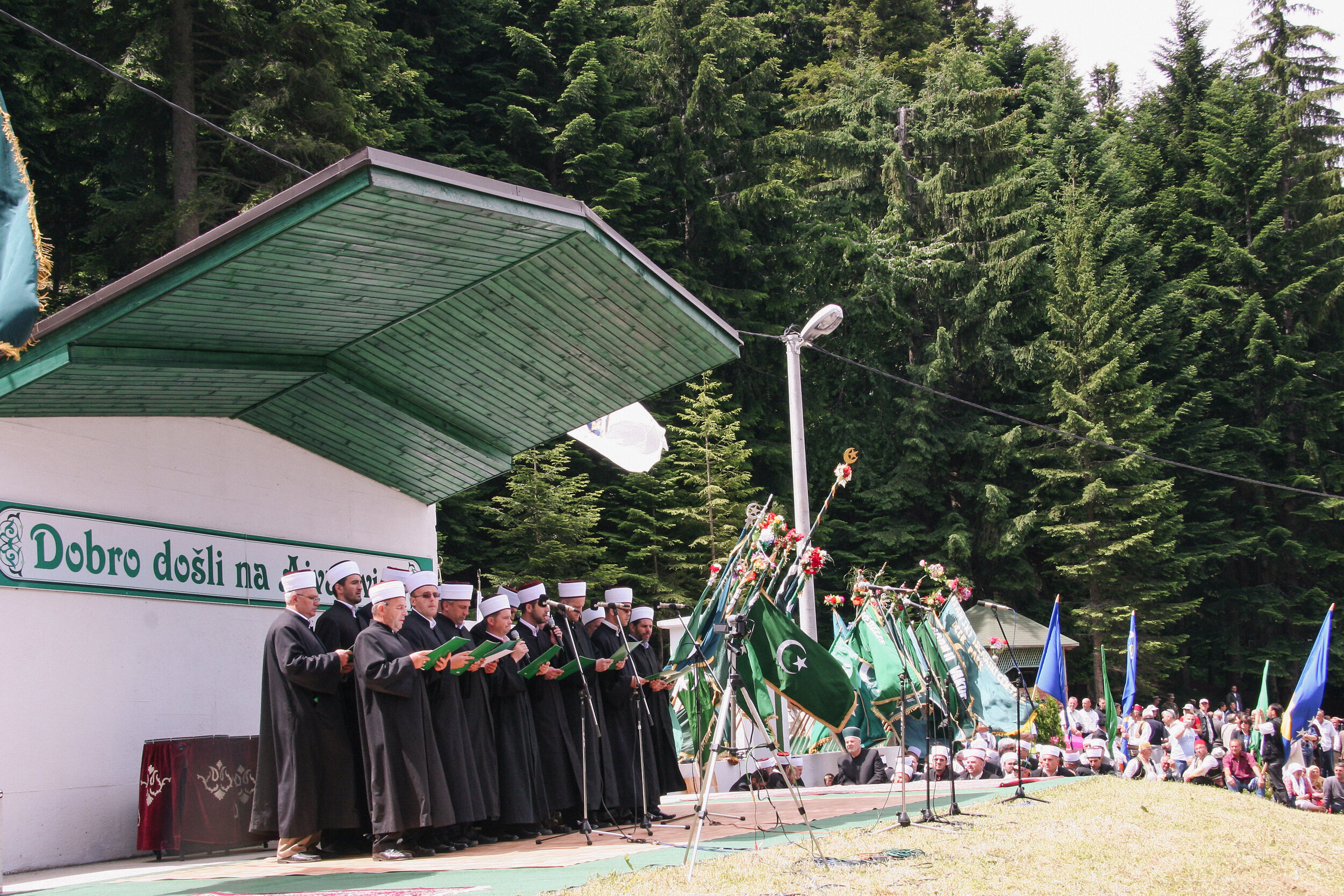Ajvatovica pilgrimage in central Bosnia-Herzegovina
Muslim Pilgrimage in Southeastern Europe
Ethnographic fieldwork in Bosnia and Herzegovina. March–May 2011 | Conducted within the framework of the research project ‘The Visual and Material Culture of Sufism in Central and Southeastern Europe’ | Outcome: conference paper and peer-reviewed book chapter
The enduring need for a ritual framing of a sacred site was certainly one of the stimuli for the renewal of the public performance and collective pilgrimage of Ajvatovica in central Bosnia-Herzegovina in June 1990. Reportedly the most attended Muslim gathering in Europe, there are factors in play around this event that go beyond just the religious. The revival and reinvention of narratives associated with Ajvatovica is a contested political-aesthetic process that also serves to (re)define and (re)shape the authenticity and representation of the collective ethno-national and religious identities of the Bosniaks.
Located about eighty-five kilometers west of Sarajevo at the Ajvatovica plateau (the Šuljaga mountain) near the towns of Donji Vakuf and Bugojno, northwest of the small town of Prusac, the pilgrimage is an annual event. Taking place at the end of June with a two-week cultural, religious, and tourist program, it culminates in a two-day procession to the holy sites in the remote mountains. In 1947 the practice was banned in Communist Yugoslavia. In a post-Yugoslav context, the ritualization of the national history and heritage is inextricably connected with the formation of national identity and the re-Islamization process, with ramifications both on the secular and the religious level.
In a very specific way, the rite of commemoration of Ajvatovica is not only the outcome of a selection and ‘canonization’ of specific religio-cultural traditions but also mirrors the longevity of popular cults as well as the historical and political conditions in these parts of southeastern Europe. Yet it also reflects the ambivalent and changing nature of interethnic relations in Bosnia. The pilgrimage plays an important role in the process of (re)shaping and transforming national memories and identities in Bosnia today and contributes to the composition of the nation’s history and heritage, a process that has not gone unchallenged. On the one hand, the pilgrimage acts as a repository that conserves some of the multilayered aspects of traditional knowledge of Bosnian heritage, which may be defined as a cumulative body of knowledge, ritual practices, and symbolic representations in interaction with the natural environment. On the other hand, it provides a platform for ways to (re)conceptualize, (re)present, and (re)negotiate the past that is largely dependent on the permanent mutual exchange between the Bosnian religious and political leadership and the Bosnian population. In particular, by transferring collective memory from one generation to another, the pilgrimage serves as a nexus and medium for a process of continuous social and aesthetic redefinition, imbued with a sacrality that confers upon it a sense of authority and authenticity. In a symbolic way, the Muslim religious commemoration of Ajvatovica under green flags with the golden ‘star and crescent’ represents a powerfully evocative yet still ‘emerging tradition’, a tradition that thereby finds itself once again in a stage of transformation, exerting its influence upon the development of Bosnian cultural memory, a polymorphous situation that is more than the sum of its parts.
Excerpt from “Pilgrimage as Muslim Religious Commemoration: The Case of Ajvatovica in Bosnia-Herzegovina,” in: Muslim Pilgrimage in Europe, eds. I. Flaskerud and R.J. Natvig (New York, NY: Routledge 2017), 98–117, here 98, 114–115



























